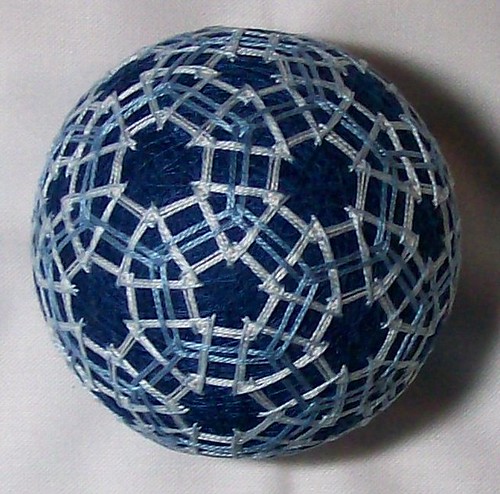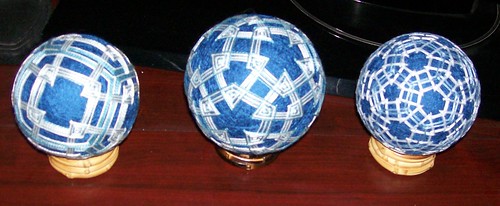The pattern consists of stitching around the main shapes squares, pentagons, or small pentagons, and layering those shapes with the triangles that tie them together. Then in 2 of the temari there is additional stitching between the main shapes. (On the large pentagons I left off that last step.)

Below you can see the 3 temari in this set so far. I wanted to stitch them in coordinating colors so you can compare the changes in the design without being distracted by different colors. However, this one was stitched in Pearl #8, and I did not have exactly the same shades. The over-all effect is very similar, though. I debated and debated with myself whether to add another row on the pentagons and triangles on this latest one. I couldn't tell, because the guide-lines were still there. I decided not to, and took out the guide-lines, and now I wish I had added another row, but once the guide-lines were gone it was too late.

Debi talked about the different scale on these temari in her post. This has been a very interesting experiment, and I want to stitch the c6, but I am not going to stitch the 42 centers, unless I can see some one's example and it is very different from the 32 centers. This one took a long time to stitch. The 32 centers turned out very similar to the c10; the only difference was the scale.





1 comment:
Jane these are beautiful!
Post a Comment